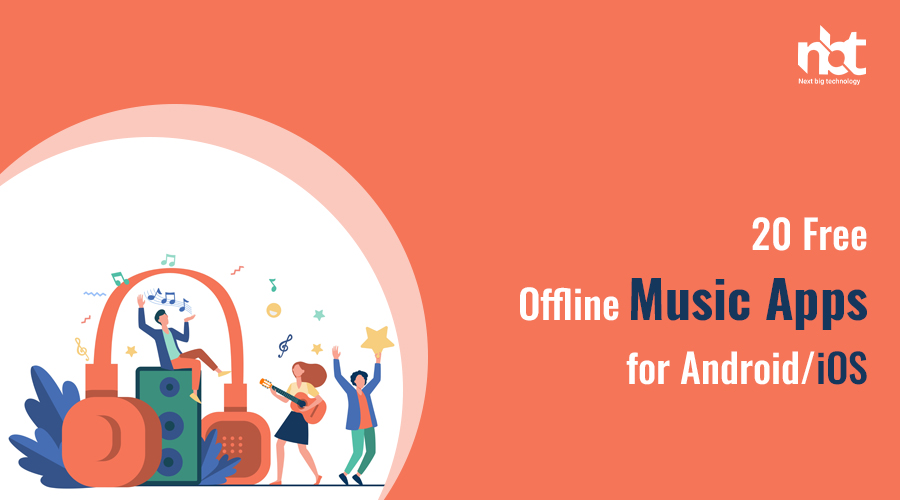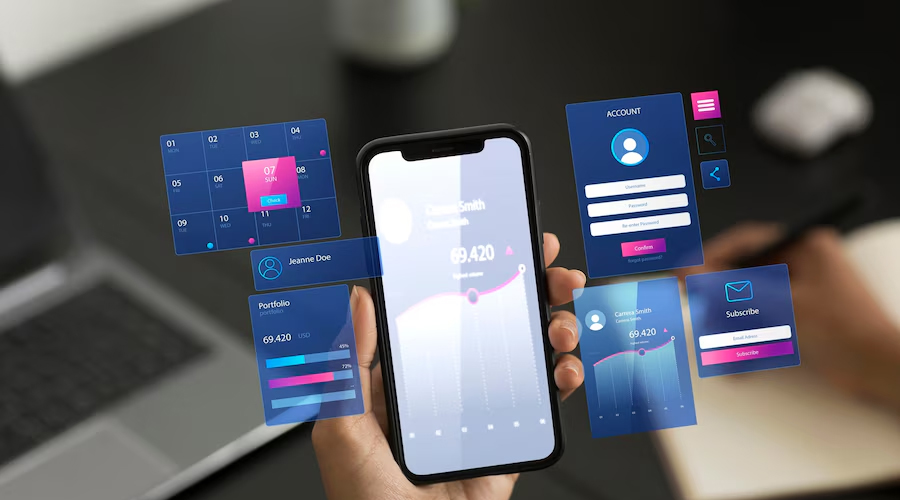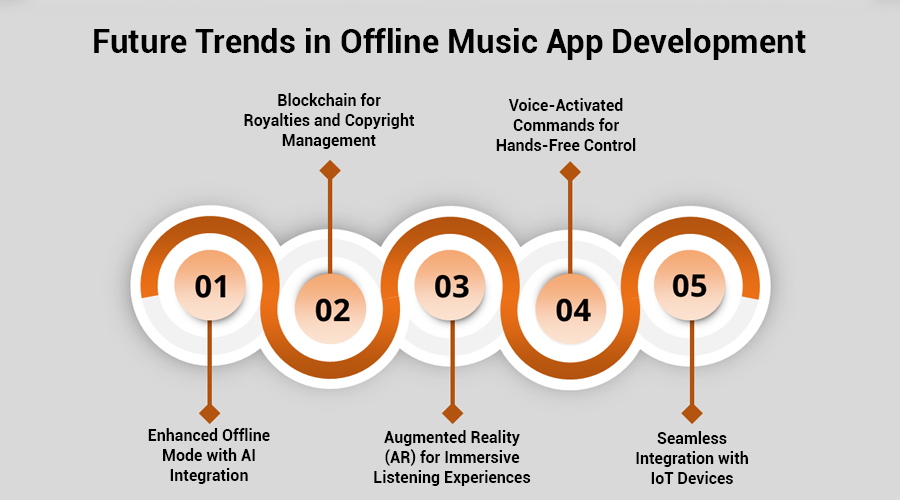Table of Contents
Introduction to Offline Music Apps
In the fast-paced digital age we live in, music has become an integral part of our daily lives. Whether we’re commuting to work, hitting the gym, or simply unwinding at home, having access to our favorite tunes is essential. While streaming services dominate the music landscape, there’s a growing demand for offline music apps that allow users to enjoy their favorite tracks without the need for a constant internet connection. In this article, we’ll delve into the world of offline music apps, exploring what they are, how they work, and why they’re becoming increasingly popular.
What Are Offline Music Apps?
Offline music apps are applications that allow users to download and store music directly onto their devices for offline playback. Unlike streaming services, which require a stable internet connection to access their vast libraries, offline music apps give users the freedom to enjoy their favorite songs anytime, anywhere, even when they’re offline. These apps typically offer a wide range of features, including the ability to create playlists, browse curated collections, and discover new music recommendations.
How Do They Work?
The workings of offline music apps are relatively simple yet incredibly convenient. Users can download songs or entire albums directly to their devices while connected to the internet. Once the music is downloaded, it’s stored locally on the device, allowing users to access it offline without any need for an internet connection. Most offline music apps also offer options for customization, allowing users to organize their music library, create playlists, and even adjust audio settings to suit their preferences.
Why Are They Gaining Popularity?
There are several reasons why offline music apps are gaining popularity among music enthusiasts:
- Convenience: Offline music apps offer unparalleled convenience by allowing users to access their favorite music without relying on an internet connection. Whether you’re traveling, camping, or simply in an area with poor network coverage, offline music apps ensure that your music is always within reach.
- Save Data: Streaming music can consume a significant amount of data, especially when listening to high-quality audio. Offline music apps eliminate the need for streaming, helping users conserve their data allowance while still enjoying high-quality music.
- Battery Life: Constantly streaming music can drain your device’s battery life. By downloading music for offline playback, users can preserve their battery and enjoy extended listening sessions without worrying about running out of power.
- Improved Performance: Offline music apps often offer enhanced performance compared to streaming services, as they rely solely on local storage and playback. This can result in faster load times, smoother playback, and overall better user experience.
- Privacy and Security: Some users prefer to keep their music consumption private and secure. Offline music apps allow users to enjoy their music without logging into accounts or sharing personal data, providing an added layer of privacy and security.
Popular Offline Music Apps
While there are numerous offline music apps available across various platforms, some of the most popular ones include:
- Spotify: While primarily known as a streaming service, Spotify also offers a feature that allows users to download music for offline listening with a premium subscription.
- Apple Music: Apple Music provides subscribers with the option to download songs and albums for offline playback, making it a favorite among iOS users.
- Google Play Music: Google Play Music allows users to download music for offline listening and offers a vast library of songs and albums.
- Amazon Music: With Amazon Music, users can download music for offline playback and access a wide selection of tracks, playlists, and albums.
- Deezer: Deezer offers a downloadable library of music for offline listening, along with personalized recommendations and curated playlists.
Advantages of Offline Music Apps
In today’s fast-paced digital world, music has become an integral part of our lives. Whether we’re commuting to work, hitting the gym, or simply unwinding after a long day, having access to our favorite tunes is non-negotiable. While streaming services have dominated the music scene, offline music apps have quietly emerged as game-changers, offering a host of advantages that cater to the needs of music lovers everywhere.
So, what exactly are offline music apps, and what sets them apart? Let’s delve into the advantages that make them a compelling choice for music enthusiasts:
- Uninterrupted Listening Experience: One of the standout features of offline music apps is their ability to play music without an internet connection. This means you can enjoy your favorite tracks anytime, anywhere, without worrying about buffering or data usage. Whether you’re on a long flight, camping in the wilderness, or exploring remote areas, your music library is always at your fingertips.
- Conservation of Data: With offline music apps, you can bid farewell to hefty data charges. By downloading your favorite songs or playlists while connected to Wi-Fi, you can conserve your mobile data for other essential tasks. This is particularly advantageous for users with limited data plans or those who frequently find themselves in areas with poor network coverage.
- Optimal Battery Usage: Streaming music online can be a drain on your device’s battery life, especially when you’re on the go. Offline music apps alleviate this issue by playing downloaded songs directly from your device’s storage, minimizing battery consumption. This allows you to enjoy extended listening sessions without constantly worrying about your battery dying mid-song.
- Personalized Music Libraries: Offline music apps empower users to curate personalized libraries tailored to their unique tastes. Whether you prefer rock classics, indie ballads, or the latest chart-toppers, you have complete control over what goes into your music collection. This level of customization ensures that every listening session is a reflection of your individuality and mood.
- Enhanced Privacy and Security: By downloading music for offline listening, you reduce your reliance on streaming platforms, which may collect data for targeted advertising or other purposes. Offline music apps offer a more private and secure way to enjoy your favorite songs without compromising your personal information.
- No Ads, No Interruptions: Tired of being bombarded with ads while streaming music online? Offline music apps offer a respite from incessant interruptions, allowing you to immerse yourself fully in the music without any distractions. Say goodbye to annoying commercials and enjoy uninterrupted listening sessions from start to finish.
- Accessibility for All: Offline music apps cater to users across all demographics, including those in regions with limited internet access or high data costs. Whether you’re a music aficionado in a bustling metropolis or a rural dweller craving musical escapism, offline music apps ensure that everyone can enjoy their favorite tunes without barriers.
Compatibility with Android and iOS Devices
In today’s digital age, where smartphones have become an indispensable part of our lives, ensuring compatibility across different platforms has become paramount. With the dominance of Android and iOS operating systems in the mobile market, it’s essential for developers and users alike to understand the significance of compatibility between these two giants.
Whether you’re a developer striving to create seamless experiences for your users or an individual seeking devices that effortlessly sync with one another, compatibility between Android and iOS devices is crucial. Let’s delve deeper into this realm and explore how compatibility is achieved and why it matters.
Understanding Compatibility:
Compatibility refers to the ability of different systems, devices, or applications to work together without any hindrance. In the context of Android and iOS devices, compatibility entails ensuring that applications, software, and hardware components interact seamlessly across both platforms.
Achieving Compatibility:
- Cross-Platform Development Tools: Developers often leverage cross-platform development tools such as Xamarin, React Native, or Flutter to build applications that can run on both Android and iOS devices with minimal adjustments. These tools streamline the development process and help maintain consistency across platforms.
- APIs and Standards: Adhering to industry standards and utilizing common APIs (Application Programming Interfaces) facilitate compatibility between Android and iOS devices. By following established guidelines, developers can ensure that their applications function smoothly across different platforms.
- Testing and Quality Assurance: Rigorous testing across various devices and operating system versions is essential to identify and rectify compatibility issues. Quality assurance measures, including beta testing and user feedback, play a crucial role in refining applications for optimal performance on both Android and iOS devices.
Why Compatibility Matters:
- Enhanced User Experience: Compatibility ensures that users can seamlessly transition between Android and iOS devices without encountering any usability issues. This enhances the overall user experience and fosters customer satisfaction.
- Expanded Market Reach: By catering to both Android and iOS users, developers can tap into a larger market segment and maximize their application’s reach. This broader audience base translates to increased visibility and potential revenue streams.
- Brand Reputation: A reputation for compatibility and reliability can significantly enhance a brand’s image. Users are more likely to trust and recommend applications that consistently deliver a seamless experience across different platforms.
User-Friendly Interface and Features
In today’s digital age, where every click counts and attention spans are fleeting, the importance of a user-friendly interface cannot be overstated. It’s the digital storefront of your product or service, the first impression that can make or break user engagement. But what exactly makes an interface user-friendly, and what features can elevate it from good to great? Let’s delve into the world of user-centric design and explore the key elements that define a truly exceptional user experience.
- Intuitive Navigation: The cornerstone of any user-friendly interface is intuitive navigation. Users should be able to effortlessly find what they’re looking for without having to think twice. Clear and concise menu structures, logical hierarchy, and intuitive labeling all contribute to a seamless navigation experience. Whether it’s a website, mobile app, or software interface, simplicity is key.
- Responsive Design: In today’s multi-device world, responsiveness is non-negotiable. A user-friendly interface adapts seamlessly to different screen sizes and resolutions, ensuring a consistent experience across desktops, tablets, and smartphones. Responsive design not only enhances usability but also boosts SEO, as search engines prioritize mobile-friendly websites in their rankings.
- Visual Consistency: Consistency breeds familiarity, and familiarity breeds trust. A visually consistent interface instills confidence in users, making them feel at ease as they navigate through different sections or pages. Consistent typography, color schemes, and layout patterns create a cohesive visual language that guides users through their journey, minimizing cognitive load and maximizing usability.
- Fast Loading Speeds: In the age of instant gratification, nobody likes to wait. Slow loading speeds can be a major turn-off for users, leading to high bounce rates and lost opportunities. A user-friendly interface prioritizes performance optimization, minimizing loading times through techniques like image compression, browser caching, and code minification. Every second counts in the digital realm, and a fast-loading interface can be the difference between a satisfied user and a frustrated one.
- Personalization: One size doesn’t fit all, especially in the realm of user experience. Personalization is the key to creating meaningful interactions that resonate with individual users. Whether it’s recommending tailored content based on past behavior, allowing users to customize their preferences, or providing contextually relevant prompts, personalization adds a human touch to the digital experience, fostering a deeper connection between users and the interface.
- Accessibility: Accessibility isn’t just a checkbox; it’s a moral imperative. A user-friendly interface is inclusive by design, catering to users of all abilities and disabilities. From alt text for images to keyboard navigation for screen readers, accessibility features ensure that everyone can access and interact with the interface on equal footing. By embracing accessibility best practices, you not only comply with legal requirements but also demonstrate your commitment to diversity and inclusivity.
- Feedback Mechanisms: Communication is a two-way street, and a user-friendly interface listens as much as it speaks. Feedback mechanisms such as contact forms, surveys, and in-app feedback tools empower users to voice their opinions, report issues, and suggest improvements. By actively soliciting and responding to user feedback, you demonstrate a willingness to evolve and adapt based on user needs, fostering a culture of continuous improvement and customer satisfaction.
Customization Options and Preferences
In today’s consumer-driven world, customization reigns supreme. From personalized playlists on streaming services to made-to-order meals at restaurants, the desire for tailor-made experiences is at an all-time high. Whether it’s selecting the color of your new smartphone or choosing the toppings on your pizza, customization options and preferences play a pivotal role in shaping our daily lives.
Understanding Customization: Customization refers to the ability to modify products, services, or experiences according to individual preferences or specifications. It empowers consumers to have a say in what they buy or use, fostering a sense of ownership and satisfaction. This trend has been fueled by advancements in technology, which have made it easier for businesses to offer personalized solutions at scale.
The Power of Choice: One of the key benefits of customization is the power of choice it affords consumers. Whether it’s selecting the features of a software application or personalizing the design of a piece of clothing, having options allows individuals to express their unique tastes and preferences. This sense of control can lead to increased satisfaction and loyalty, as consumers feel that their needs are being met on a deeper level.
Personalized Experiences: In today’s hyper-connected world, consumers expect more than just products or services – they crave personalized experiences. Businesses across industries are leveraging data analytics and machine learning algorithms to gain insights into consumer behavior and preferences, allowing them to offer targeted recommendations and customized experiences. From curated playlists on music streaming platforms to tailored recommendations on e-commerce websites, personalization is becoming increasingly sophisticated.
Customization in Practice: The realm of customization extends far beyond just consumer goods. In industries such as healthcare, education, and finance, customization plays a crucial role in delivering personalized solutions to individuals. For example, personalized medicine leverages genetic data to tailor treatments to the specific needs of patients, improving outcomes and reducing side effects. Similarly, personalized learning platforms use data analytics to create individualized learning paths for students, catering to their unique strengths and weaknesses.
Challenges and Considerations: While customization offers numerous benefits, it also presents challenges for businesses and consumers alike. From a business perspective, implementing robust customization options requires investment in technology, data infrastructure, and talent. Moreover, there are concerns surrounding data privacy and security, as businesses collect and analyze increasing amounts of personal information to deliver personalized experiences. From a consumer standpoint, navigating the plethora of options available can be overwhelming, leading to decision fatigue and analysis paralysis.
The Future of Customization: As technology continues to advance and consumer expectations evolve, the future of customization looks promising. From augmented reality fitting rooms that allow shoppers to visualize clothing before making a purchase to AI-powered virtual assistants that anticipate our needs and preferences, the possibilities are endless. However, striking the right balance between customization and privacy will be key to ensuring that consumers feel empowered rather than exploited.
Offline Playback Modes and Settings
In the era of ubiquitous connectivity, where the internet seems to permeate every facet of our lives, there still come moments when we find ourselves without a stable network connection. Whether it’s on a long flight, during a commute through a tunnel, or simply in an area with poor reception, the inability to stream content can be frustrating. That’s where offline playback modes and settings come to the rescue, offering a seamless entertainment experience even when offline.
Offline playback is a feature offered by many streaming platforms and apps, allowing users to download content onto their devices for viewing or listening later, without requiring an internet connection. However, not all offline playback experiences are created equal. Understanding the different modes and settings available can significantly enhance your offline entertainment experience.
1. Download Quality Settings:
One of the essential aspects of offline playback is the ability to control the quality of downloaded content. Most platforms offer various download quality options, ranging from standard definition to high definition. Choosing the appropriate quality setting depends on factors such as available storage space on your device and the resolution of the screen you’ll be viewing on. Opting for lower quality downloads can save storage space while still providing a decent viewing experience, especially on smaller screens like smartphones.
2. Playback Modes:
Offline playback modes dictate how downloaded content behaves when you’re offline. There are typically two primary modes:
- Limited Offline Mode: In this mode, downloaded content remains accessible only for a specific period or until you connect to the internet again. Platforms often impose time limits or require periodic revalidation to ensure that users remain subscribed and connected. Limited offline mode is ideal for temporary offline situations, such as flights or commutes, where you plan to consume the content within a relatively short timeframe.
- Unlimited Offline Mode: As the name suggests, this mode allows downloaded content to remain accessible indefinitely, regardless of internet connectivity. Users can enjoy their favorite movies, TV shows, or music offline without worrying about expiration dates. However, it’s essential to note that content downloaded in unlimited offline mode may still be subject to licensing restrictions, so it’s crucial to stay subscribed to the service and periodically connect to the internet to validate your account.
3. Storage Management:
Offline playback often requires downloading content onto your device, which can consume a significant amount of storage space over time. To manage storage efficiently, platforms may offer features like:
- Automatic Download Deletion: Some platforms automatically delete downloaded content after it’s been watched or after a certain period to free up storage space. Users can typically customize deletion preferences based on factors like watch history or storage capacity.
- Manual Deletion: Alternatively, users may have the option to manually delete downloaded content to reclaim storage space. This gives users more control over which content to keep and which to remove.
4. Offline Playlist Creation:
Creating playlists of downloaded content can streamline the offline playback experience, allowing users to organize and access their favorite movies, TV episodes, or songs more efficiently. Users can curate playlists based on genres, moods, or themes, making it easier to find the perfect content for any occasion, even when offline.
Security and Privacy Measures
In today’s interconnected digital landscape, where the boundaries between the virtual and real worlds blur, ensuring the security and privacy of our online activities has become paramount. From personal communication to financial transactions and sensitive data storage, every aspect of our lives seems to be intertwined with the digital realm. However, this convenience comes with risks, making it imperative to adopt comprehensive security and privacy measures to safeguard our digital footprint.
Understanding the Risks:
Before delving into the measures to bolster security and privacy, it’s crucial to understand the prevalent risks. Cyber threats such as malware, phishing attacks, ransomware, and data breaches loom large, targeting individuals, businesses, and even governments. Additionally, the proliferation of social media platforms and online services raises concerns about data privacy, with companies often collecting and monetizing user information without explicit consent.
Essential Security Measures:
- Strong Passwords: Utilize complex passwords comprising a mix of letters, numbers, and special characters. Avoid using easily guessable information like birthdays or pet names. Consider using a reputable password manager to securely store and manage passwords for various accounts.
- Two-Factor Authentication (2FA): Enable 2FA wherever possible to add an extra layer of security. This typically involves receiving a one-time code on your smartphone or email, in addition to entering your password when logging into an account.
- Update Regularly: Keep all software, operating systems, and applications up to date with the latest security patches. Software updates often include fixes for known vulnerabilities that cybercriminals exploit.
- Use Secure Networks: Avoid connecting to public Wi-Fi networks for sensitive transactions, such as online banking or shopping. Opt for trusted networks or consider using a virtual private network (VPN) to encrypt your internet connection.
- Antivirus Software: Install reputable antivirus software and keep it updated to detect and mitigate malware threats effectively.
Protecting Privacy:
- Review Privacy Settings: Regularly review and adjust privacy settings on social media platforms and online services to control the amount of personal information shared with third parties.
- Limit Data Sharing: Be cautious about sharing personal information online, especially on public forums or with unknown entities. Minimize the amount of data you disclose, and consider the potential consequences before sharing sensitive information.
- Encrypt Communications: Use encrypted messaging apps and email services to ensure that your communications remain private and secure from eavesdroppers.
- Browsing Anonymity: Consider using privacy-focused web browsers and search engines that prioritize user privacy and minimize data tracking.
- Data Backup: Regularly back up important data to secure locations, such as external hard drives or cloud storage services. In the event of a ransomware attack or data breach, having backups ensures that you can restore your data without succumbing to extortion demands.
Offline Music App Reviews and Ratings
In today’s digital age, music has become an integral part of our lives. Whether you’re commuting to work, hitting the gym, or simply relaxing at home, having access to your favorite tunes is a must. While streaming services dominate the market, there’s still a significant demand for offline music apps that allow users to enjoy their music without relying on an internet connection. In this article, we’ll take a closer look at some of the top offline music apps, providing reviews and ratings to help you find the perfect option for your needs.
- Spotify
- Rating: 4.5/5
- Review: Spotify, one of the most popular streaming platforms, also offers a robust offline mode for premium subscribers. With the ability to download playlists, albums, and podcasts, users can enjoy their favorite content without worrying about data usage. The app’s intuitive interface and vast library make it a top choice for music lovers worldwide.
- Apple Music
- Rating: 4/5
- Review: Apple Music provides a seamless offline listening experience for subscribers, allowing them to download songs and albums directly to their devices. While the app is well-designed and offers exclusive content, it’s worth noting that it’s limited to Apple devices, which may be a drawback for Android users.
- Google Play Music (Now YouTube Music)
- Rating: 4/5
- Review: Google Play Music, now merged with YouTube Music, offers an extensive collection of songs that can be downloaded for offline listening. The app’s integration with YouTube provides access to music videos and live performances, enhancing the overall user experience. However, some users have reported issues with the transition to YouTube Music, impacting its rating slightly.
- Amazon Music
- Rating: 4/5
- Review: Amazon Music’s offline mode allows subscribers to download their favorite tracks and playlists for offline playback. With a vast library of songs and albums, as well as exclusive content for Prime members, the app offers excellent value for music enthusiasts. However, the interface could be more user-friendly, leading to a slightly lower rating compared to other options.
- Tidal
- Rating: 4.5/5
- Review: Tidal stands out for its high-fidelity audio quality, making it a top choice for audiophiles. The app’s offline mode ensures that users can enjoy their music in the best possible sound quality, even when they’re offline. While Tidal’s subscription fees are higher than some other services, the premium audio experience justifies the cost for many users.
Future Trends in Offline Music App Development
In the ever-evolving realm of music streaming, offline functionality has emerged as a crucial feature, allowing users to enjoy their favorite tunes even when internet connectivity is absent. As technology continues to advance, the landscape of offline music app development is poised for remarkable transformations. Let’s delve into the future trends that are set to redefine the offline music experience.
- Enhanced Offline Mode with AI Integration: Future offline music apps will leverage artificial intelligence (AI) to personalize user experiences even in offline mode. These apps will analyze users’ listening habits, preferences, and contextual data to curate playlists tailored to their tastes. By understanding user behavior, AI-powered offline modes will ensure a seamless transition between online and offline listening, delivering a continuous and immersive music experience.
- Blockchain for Royalties and Copyright Management: Blockchain technology is poised to revolutionize royalty payments and copyright management in the music industry. Offline music apps of the future will integrate blockchain to ensure transparent and fair compensation for artists and rights holders. Smart contracts embedded within the blockchain will automate royalty distribution, eliminating intermediaries and streamlining the payment process. This innovation will foster trust and accountability within the music ecosystem while empowering artists to receive their rightful earnings.
- Augmented Reality (AR) for Immersive Listening Experiences: Imagine stepping into a virtual concert hall or studio from the comfort of your home. Offline music apps of the future will harness augmented reality (AR) technology to offer immersive listening experiences. Users will be able to visualize concerts, album artwork, and exclusive content in a virtual environment, blurring the lines between the digital and physical worlds. AR-powered offline modes will redefine how users engage with their favorite artists, creating memorable and interactive experiences beyond traditional listening.
- Voice-Activated Commands for Hands-Free Control: Voice recognition technology has become increasingly sophisticated, paving the way for hands-free control in offline music apps. Future trends will see the integration of voice-activated commands, allowing users to navigate, play, and discover music without lifting a finger. Whether it’s searching for a specific track, adjusting volume, or creating playlists on the go, voice-enabled offline modes will offer unparalleled convenience and accessibility, revolutionizing the way users interact with their music libraries.
- Seamless Integration with IoT Devices: The Internet of Things (IoT) ecosystem is expanding rapidly, with smart devices permeating every aspect of daily life. Offline music apps will capitalize on this trend by seamlessly integrating with IoT devices such as smart speakers, wearable tech, and connected cars. Users will enjoy effortless synchronization of their music libraries across multiple devices, ensuring a consistent listening experience regardless of the platform. This synergy between offline music apps and IoT devices will usher in a new era of connectivity and convenience for music enthusiasts worldwide.
Top Offline Music Apps Companies
In the age of digital music streaming, offline music apps have become a staple for enthusiasts who want to enjoy their favorite tunes without relying on an internet connection. From long flights to remote areas with poor connectivity, offline music apps provide a reliable solution for uninterrupted music playback. Let’s explore seven top-notch companies that are redefining the way we listen to music offline.
-
-
Next Big Technology:

Focus Area
- Mobile App Development
- App Designing (UI/UX)
- Software Development
- Web Development
- AR & VR Development
- Big Data & BI
- Cloud Computing Services
- DevOps
- E-commerce Development
Industries Focus
- Art, Entertainment & Music
- Business Services
- Consumer Products
- Designing
- Education
- Financial & Payments
- Gaming
- Government
- Healthcare & Medical
- Hospitality
- Information Technology
- Legal & Compliance
- Manufacturing
- Media
-
- Apple Music: As one of the pioneers in digital music, Apple Music offers a seamless offline listening experience for its subscribers. With a vast catalog of songs and exclusive content, users can download music to their devices and enjoy it offline, whether they’re on a road trip or exploring the great outdoors.
- Amazon Music: Amazon Music has emerged as a strong contender in the music streaming industry, offering both online and offline playback options. With Amazon Music Unlimited, subscribers can download music for offline listening, making it convenient for users to enjoy their favorite tracks without worrying about data connectivity.
- Google Play Music: Although Google Play Music has transitioned into YouTube Music, its offline music capabilities remain robust. Users can download their favorite songs and playlists to their devices, ensuring that they have access to their music library even when they’re offline or in airplane mode.
- Deezer: Deezer may not be as well-known as some of its competitors, but it certainly holds its own in the realm of offline music apps. With Deezer Premium, users can download music for offline listening, making it an ideal choice for those who want to enjoy their favorite tracks without using up their data allowance.
- Tidal: Tidal has carved out a niche for itself in the music streaming market by offering high-fidelity audio and exclusive content. With Tidal Premium and Tidal HiFi subscriptions, users can download music in high quality for offline listening, ensuring an immersive audio experience wherever they go.
- Pandora: While Pandora is primarily known for its personalized radio stations, it also offers offline listening features for its subscribers. With Pandora Plus and Pandora Premium, users can download their favorite stations, albums, and playlists for offline playback, making it easy to enjoy music on the go.
FAQs On Offline Music Apps
In today’s digital age, offline music apps have revolutionized how we listen to music. Whether you’re on a long flight, commuting through tunnels, or just out of range of Wi-Fi, offline music apps ensure that the music never stops. But despite their widespread use, many users still have questions about how these apps work and how to make the most of them. In this article, we’ll address some frequently asked questions about offline music apps.
1. What are offline music apps? Offline music apps are applications that allow users to download songs, albums, or playlists directly to their device for offline listening. This means you can enjoy your favorite tunes without an internet connection, perfect for traveling or areas with poor connectivity.
2. How do offline music apps work? Offline music apps work by storing music files locally on your device. When you download a song or playlist for offline listening, the app saves the audio files onto your device’s storage. Then, when you play music in offline mode, the app accesses these locally stored files instead of streaming them over the internet.
3. Which offline music apps are the best? There are several popular offline music apps available, each with its own unique features and advantages. Some of the top choices include Spotify, Apple Music, Amazon Music, and Google Play Music. It ultimately depends on your personal preferences, such as music library size, user interface, and device compatibility.
4. Can I listen to offline music without a subscription? While many offline music apps require a subscription for full access to their features, some offer limited offline listening options for free users. For example, Spotify Free allows users to download playlists for offline listening with occasional ads. However, for unlimited offline access and ad-free listening, a premium subscription is usually required.
5. How much storage do offline music apps consume? The amount of storage used by offline music apps depends on the quality of the audio files and the number of songs or playlists you download. Higher quality audio files, such as those in FLAC or WAV format, will consume more storage space compared to lower quality formats like MP3 or AAC. Additionally, the more music you download, the more storage space it will occupy on your device.
6. Can I share offline music with friends? Most offline music apps do not allow you to directly share downloaded songs or playlists with friends. However, you can usually share music recommendations or playlists through the app’s social features or messaging platforms. Some apps also offer collaborative playlist features, allowing multiple users to contribute and listen to the same playlist.
7. How do I manage offline music downloads? Offline music apps typically have built-in features for managing your downloaded music. You can view and delete downloaded songs or playlists, adjust download settings, and free up storage space by removing unused downloads. Additionally, some apps offer automatic download options for your favorite artists or genres, making it easy to keep your offline music library up to date.
Thanks for reading our post “20 Free Offline Music Apps for Android/iOS”. Please connect with us to learn more about Best 20 Free Offline Music Apps.















